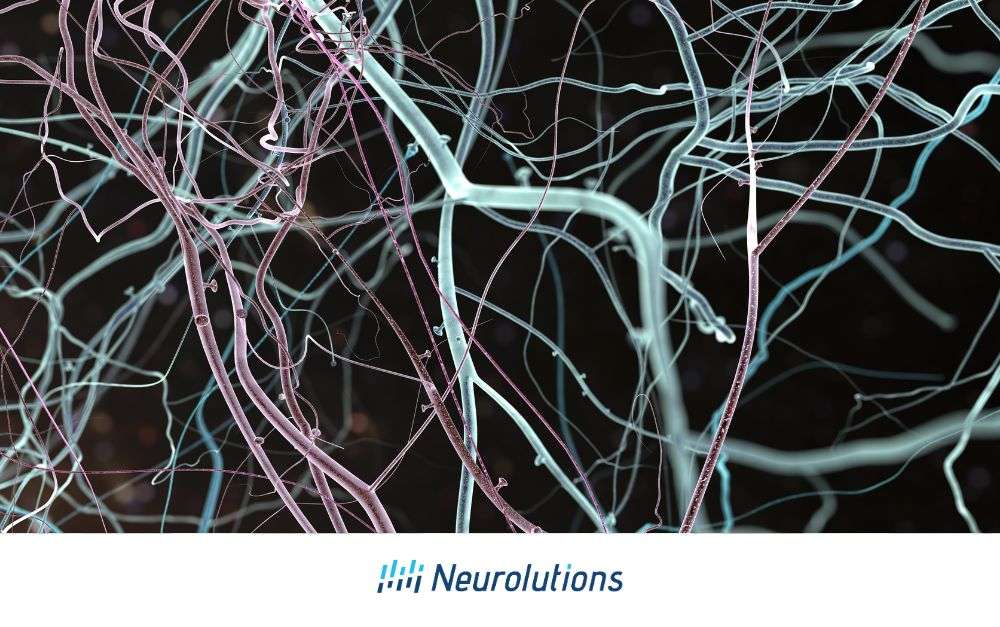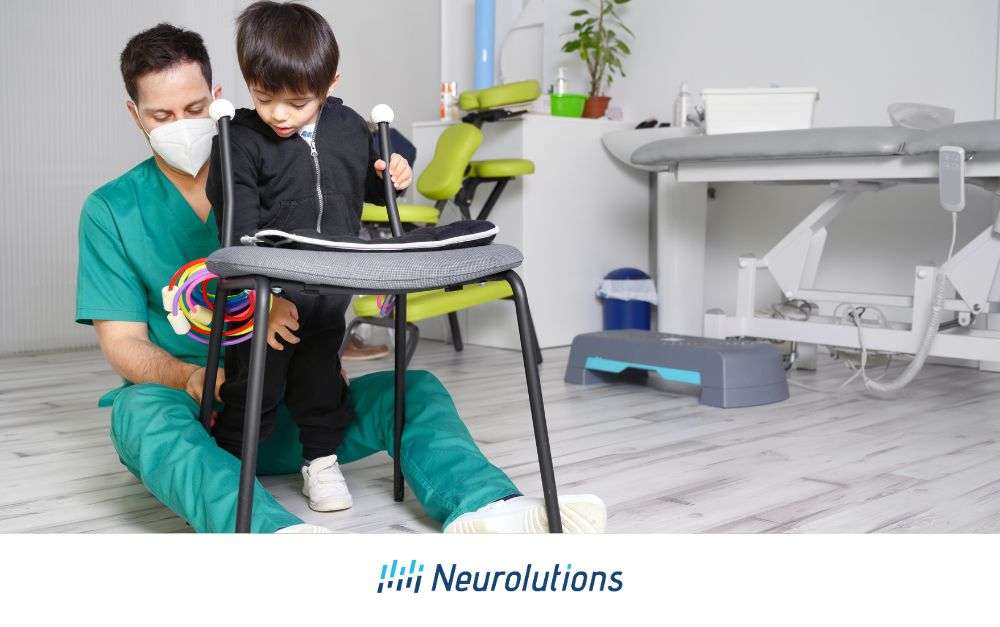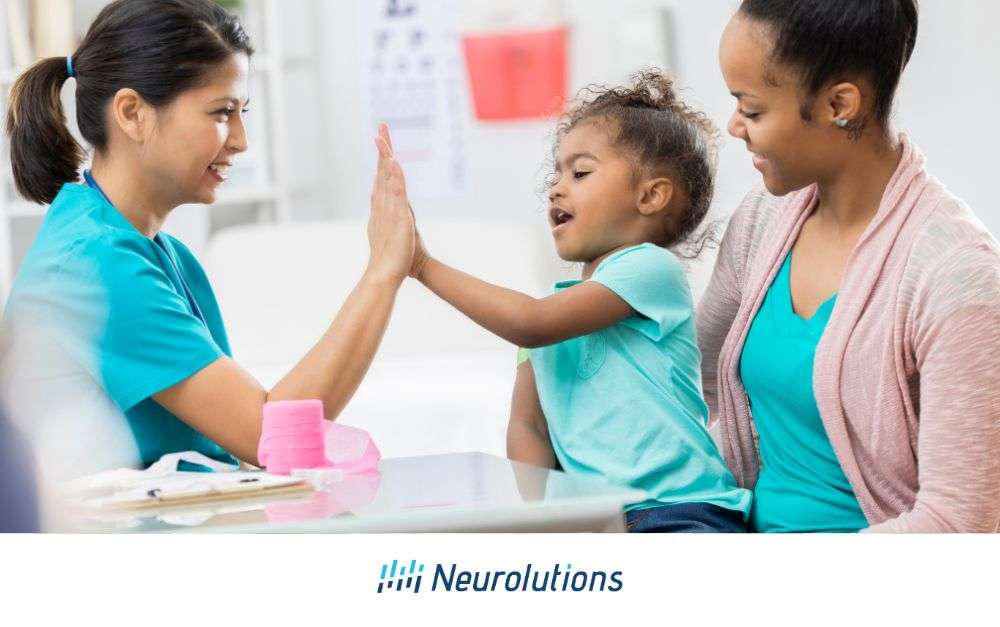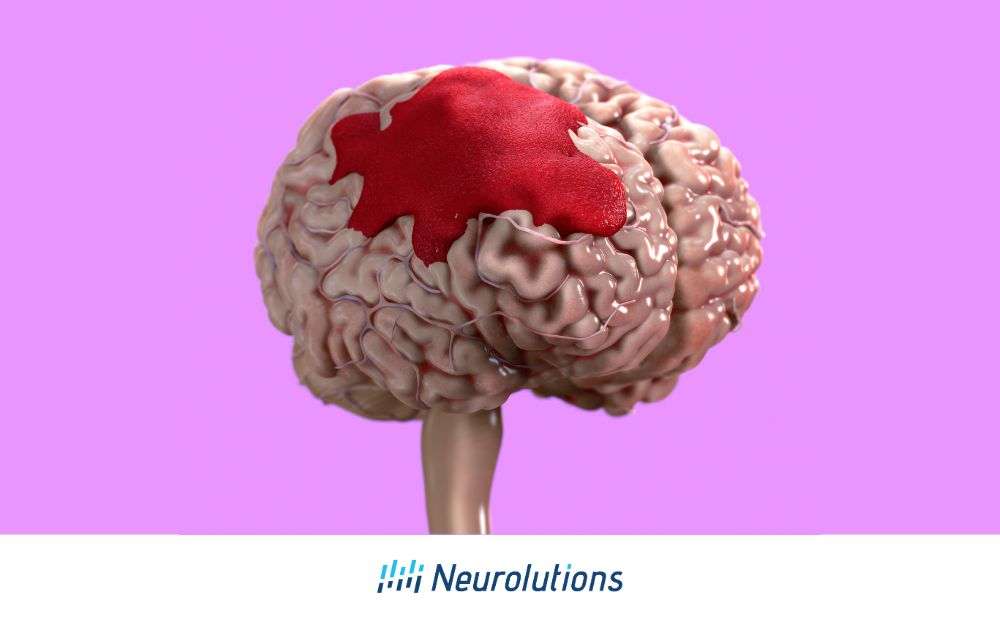Introduction to Brain Plasticity
Brain plasticity is defined as the nervous system’s ability to create new nerve communication pathways in the brain. This rewiring process occurs throughout a person’s lifespan. After a stroke or a Traumatic Brain Injury (TBI), brain plasticity plays an important role in recovery (1). The concept of brain plasticity has been under exploration since the late 1800s. However, it was Adolph Meyer, Chair of the Psychiatry Department at Johns Hopkins University in the early 1900s, who is credited as its first advocate in the field of medical research (2). Brain plasticity can also be referred to as neuroplasticity or cortical plasticity. Regardless of the cause of a brain injury, whether it be a stroke or another factor, engaging the brain in learning, problem-solving, and decision-making enhances brain plasticity. This article describes how brain plasticity occurs, the function and effects of brain plasticity in stroke recovery, and how stroke rehabilitation approaches such as physical therapy (PT) and occupational therapy (OT) engage brain plasticity and can potentially regain lost abilities. This article will also address activities and exercises to increase brain plasticity, as well as the influence of nutrition and pre-stroke lifestyle choices.
Demystifying Brain Plasticity – How the Brain Works
The brain has different sections that control thinking, movement, and body functions. Strokes can damage these sections, affecting movement and other abilities.
The brain is composed of sections that play different roles in how people think, move and function. These sections communicate within the brain and to the rest of the body through nerve signals to help our muscles move. When someone has a stroke, these pathways can be damaged and impact a person’s movement. This explains why paralysis or weakness is frequently the most obvious sign of a stroke. To better understand how stroke damage and recovery play into brain plasticity, it is helpful to know about the anatomy of the brain and the function of its various sections. The following are three main parts of the brain along with their key roles (3):
- Brainstem: The brainstem sits under the cerebrum at the bottom of the brain. It links the brain to the spinal cord, so it passes nerve messages between the brain and the body. The brainstem also regulates autonomic functions, such as breathing, body temperature, consciousness, and sleep.
- Cerebellum: The cerebellum is located under the cerebrum and is responsible for monitoring and regulating autonomic behaviors such as reflexes. It also plays a part in keeping the body balanced and coordinated.
- Cerebrum: The cerebrum is the largest part of the brain, with two hemispheres (right and left). It is associated with the higher cognitive function roles of thinking, learning, memory, language, emotion, movement, and perception.
Brainstem strokes are the most severe and often result in death (4). Cerebellum-only strokes account for 1.5-10% of all strokes, with most strokes impacting the cerebrum (5, 6).
Exploring the Functions of the Cerebrum’s Four Lobes
The cerebrum, the largest part of the brain, has two sides and four lobes. Each is responsible for different functions like thinking, movement, sensory processing, and vision.
Given that most strokes impact the cerebrum, understanding this part of the brain and how it works can be helpful in understanding the effects of a stroke. The cerebrum is split into four lobes (7):
- Frontal Lobe: associated with advanced thinking abilities like problem-solving. It houses the motor cortex, which plans and coordinates movements. It also includes the region responsible for speech and communication.
- Parietal Lobe: associated with understanding sensory inputs like pain and pressure. It’s also involved in interpreting what someone sees and hears, planning movements, learning, and recognizing space around us.
- Temporal Lobe: associated with memory, learning, understanding, recognizing faces and objects, and processing what people hear. It also includes the area for understanding language.
- Occipital Lobe: receives sensory information from the eyes and holds the primary visual cortex. It is the smallest lobe.
A stroke or TBI can destroy or damage the brain’s nerve communication pathways, or neural networks. Fortunately, brain plasticity can enable other areas of the brain to assume the tasks of the injured areas and even develop new neural networks to bypass these areas. From childhood to adulthood, neural networks in the brain are developing and expanding. While brain plasticity decreases in senior-aged adults, engaging the brain through continuous learning and a lifestyle that promotes brain health can boost brain plasticity at any age (8).
Brain Plasticity and Stroke Recovery
Understanding strokes, which can be caused by blood clots or bleeding in the brain, helps us see how brain plasticity can aid recovery by allowing new pathways to form.
Understanding Stroke and the Brain’s Underlying Mechanisms:
There are two types of strokes, ischemic and hemorrhagic. Ischemic strokes occur in 87% of all stroke victims and are caused by a clot traveling in the blood to the brain or forming within the brain (9). Conversely, hemorrhagic strokes are caused by bleeding in the brain. The presence of one or multiple clots can lead to a more severe stroke. Stroke severity is also determined by the location of the clot, the size of the affected area in the brain, and the parts of the brain that sustain injury. Brain plasticity is often diminished in cases of severe stroke. Most strokes affect only one brain hemisphere rather than both. The dominant hemisphere for right-handed individuals is the left, while the dominant hemisphere for left-handed individuals is the right (10). Paralysis or weakness on one side of the body is a common stroke symptom, regardless of which hemisphere of the brain is injured. However, if the stroke occurs in the dominant hemisphere, it can also impact speech and language. In some cases, the paralysis initially experienced after stroke spontaneously resolves due to the growth of new brain cells or the brain’s plasticity taking action.
Connecting Stroke Rehab and Brain Plasticity
Rehabilitation therapies like physical and occupational therapy help engage brain plasticity, promoting the development of new pathways and the recovery of motor and cognitive skills.
For new neural networks to form and assist in stroke recovery, brain plasticity needs to be engaged. To achieve this, an individual should engage in PT and/or OT to regain lost motor skills. They should also participate in cognitive rehabilitation programs to address issues like short-term memory loss and other cognitive deficits caused by the stroke. Additional rehabilitation therapies may be necessary based on individual needs. For example, stroke survivors with speaking and language comprehension problems should also participate in sessions with a Speech-Language therapist to enable recovery. For motor skill recovery, therapists will implement repetitive exercises to promote brain plasticity and the potential to regain the use of upper and lower limbs. Occupational therapists (OTs) generally focus on the use of the upper extremities such as arms, hands, and fingers to perform Activities of Daily Living (ADLs). The re-learning and performing of ADLs boosts brain plasticity, which then increases the capacity to regain lost motor skills. Physical therapists (PTs) will hone in on motor skills to regain strength and enable walking. By participating in both PT and OT rehab programs, a stroke survivor may relearn to walk, self-dress and cook, and thereby regain a pre-stroke level of personal independence.
Influencing Overall Brain Plasticity
Brain plasticity is affected by lifestyle choices, health conditions, and daily habits. Maintaining good brain health can enhance recovery after a stroke.
A person’s “brain health” prior to the stroke or TBI can impact brain plasticity after the brain injury. If a stroke victim had epilepsy or another type of neurodegenerative disorder, this could affect their brain plasticity potential (11). Likewise, negative lifestyle habits such as smoking, substance abuse, a sedentary lifestyle, and lack of adequate nightly sleep can also have a negative impact on brain plasticity. While genetics and environment play some role in brain plasticity potential, longstanding daily habits and behavior patterns play a more critical role. The following are recommended to maintain or improve “brain health”, which is vital to boosting brain plasticity (12):
- Engage in regular physical activity
- Refrain from smoking and heavy drinking of alcoholic beverages
- Eat a healthy daily diet
- Engage in mentally-stimulating activities
Furthermore, obesity is highly linked to reduced brain plasticity in the cerebrum (13). Chronic disorders such as Type-2 Diabetes also impair brain plasticity, as can stress, insufficient sleep, and chronic depression and/or anxiety (14, 15).
Harnessing Brain Plasticity in Stroke Rehabilitation
A team approach to stroke rehabilitation that involves various therapies and activities boosts brain plasticity, helping survivors regain lost skills and independence.
Stroke rehabilitation usually involves engaging with PT and/or OT over a period of time. Additional rehabilitation care team contributors might include speech therapists, cognitive therapists, social workers, and mental health therapists. Stroke survivors often experience chronic fatigue, short-term memory loss, and depressed mood (16, 17). Therefore, encouraging motivation to perform the prescribed PT and/or OT exercises are necessary for the eventual recovery of motor skills. By integrating PT exercises aimed at regaining the ability to perform ADLs, OTs can complement this by promoting an improvement in short-term memory capacity. In conjunction, cognitive therapy will implement activities that boost short-term memory and other cognitive skills. Ultimately, a team approach to stroke rehabilitation amplifies brain plasticity and the recovery of impaired cognitive and motor skills. Certain therapy approaches that are especially effective in enhancing brain plasticity involve activities that engage multiple areas of the brain and body simultaneously. For example, engaging in a virtual experience of driving a car in traffic while manipulating a joystick to correctly steer the car down a street is a “play” activity that can requires problem-solving while also utilizing the hand. Other recreational activities often performed within a stroke rehabilitation context are:
- Craft-making
- Playing card games
- Singing songs while accompanied by a piano or guitar
It is crucial to recognize that social interaction is also linked to improved cognition and brain plasticity in stroke survivors (18, 19). PT and/or OT exercise regimens usually involve exercising both during and between sessions. Boosting motivation in survivors to engage in PT and/or OT and regain lost motor skills is critical to ensuring that the stroke survivor will perform their daily exercise regimen over the needed time frame. Additionally, physical exercise routines in an interactive context that are particularly beneficial for stroke or TBI survivors to boost brain plasticity include swimming, yoga, and Tai Chi.
Boosting Brain Plasticity with Nutrition
Eating a healthy diet rich in nutrients and low in unhealthy fats and sugars supports brain plasticity and overall health, reducing the risk of stroke.
Vitamins, minerals, and other nutrients play an essential role in maintaining overall health. In contrast, eating a daily diet that is high in sugar, “empty calories”, and/or saturated fats can be harmful. Saturated fats are strongly associated with narrowing of the arteries, or atherosclerosis (20). This condition involves the formation of plaques in artery walls that can break off and move through the bloodstream. Atherosclerosis not only raises the chance of heart attack, but it also increases the risk of stroke (21). High blood pressure also heightens stroke risk, so reducing salt intake is recommended to mitigate that risk (22). The following are recommended daily dietary habits for stroke survivors (23):
- Eat a variety of vegetables
- Eat fiber-rich whole grains rather than refined products
- Choose lean proteins
- Limit saturated fats and avoid trans fats
- Limit added sugars
Supporting Brain Plasticity as a Caregiver
Caregivers play a crucial role in encouraging stroke survivors to engage in activities that improve brain plasticity, aiding in recovery and maintaining independence.
Caregivers can help boost brain plasticity in stroke survivors by engaging in motivating conversations and supporting them in maintaining as much personal independence as possible. Caregivers can also increase the likelihood of a stroke survivor engaging in activities to improve motor skills, cognition, and mood by providing encouragement and assistance as necessary to perform PT and/or OT exercises and other rehab activities. Playing interactive games can also boost cognition as well as feelings of social connectedness. Technological interventions that can assist stroke survivors to exercise their upper and lower extremities can help stroke survivors achieve greater personal independence. Furthermore, technological interventions such as healthcare-focused mobile device apps can aid stroke survivors in remembering healthcare appointments, maintaining a healthy daily diet, remembering to take prescribed medications, and communicating with their healthcare providers.
Summing Up the Power of Brain Plasticity in Stroke Recovery
Brain plasticity allows the brain to form new pathways after a stroke, and engaging in therapies and maintaining a healthy lifestyle are key to boosting recovery and regaining lost abilities.
Brain plasticity is a term used to describe the brain’s ability to develop and grow new neural pathways throughout a person’s lifespan. Also termed neuroplasticity or cortical plasticity, it enables stroke survivors to develop new nerve “communication” pathways to replace those destroyed or damaged by the stroke. Participating in PT and/or OT is typically necessary to recover from the paralysis or weakness that frequently accompanies a stroke. Since cognitive impairments and stroke-induced depression/anxiety are common in stroke survivors, a comprehensive rehabilitation approach that involves both physical exercises and cognitive exercises is the most likely to increase brain plasticity. In turn, this increase in brain plasticity can boost the likelihood of recovering impaired motor skills, cognitive skills, and ultimately promote a sense of hope of independence.
References:
- Stroke Association. Neuroplasticity: re-wiring the brain. Webpage: https://www.stroke.org.uk/effects-of-stroke/neuroplasticity-rewiring-the-brain#:~:text=It%20has%20the%20ability%20to,it%20can%20continue%20for%20years.
- Lamb S. (2019). Neuroplasticity: A century-old idea championed by Adolf Meyer. Canadian Medical Association Journal 191(49): E1359-E1361. Webpage: https://www.ncbi.nlm.nih.gov/pmc/articles/PMC6901269/
- Guy-Evans O. (Last update: November 9, 2023). Psychology; Biopsychology. Parts Of The Brain: Anatomy, Structure & Functions. Webpage: https://www.simplypsychology.org/anatomy-of-the-brain.html
- Gowda SN, Munakomi S, and De Jesus O. (2023). Brainstem Stroke. In: StatPearls [Internet]. StatPearls Publishing: Treasure Island, FL. Webpage: https://www.ncbi.nlm.nih.gov/books/NBK560896/
- Ioannides K, Tadi P, and Naqvi IA. (2022). Cerebellar Infarct. In: StatPearls [Internet]. StatPearls Publishing: Treasure Island, FL. Webpage: https://www.ncbi.nlm.nih.gov/books/NBK470416/
- CBC Health. Left Brain Vs. Right Brain Stroke. Webpage: https://cbchealth.de/en/left-brain-vs-right-brain-stroke/
- Guy-Evans O. (Last update: November 9, 2023). Psychology; Biopsychology. Parts of the Brain: Anatomy, Structure & Functions. Webpage: https://www.simplypsychology.org/anatomy-of-the-brain.html
- Park DC, Bischof GN. (2013). The aging mind: Neuroplasticity in response to cognitive training. Dialogues in Clinical Neuroscience 15(1): 109-119. Webpage: https://www.ncbi.nlm.nih.gov/pmc/articles/PMC3622463/
- Centers for Disease Control (CDC). Stroke Facts. Webpage: https://www.cdc.gov/stroke/facts.htm#:~:text=About%2087%25%20of%20all%20strokes,to%20the%20brain%20is%20blocked.&text=Stroke%2Drelated%20costs%20in%20the,billion%20between%202018%20and%202019.
- University Health (San Antonio, TX). (May 24, 2023). Left vs. Right Brain Stroke. Webpage: https://www.universityhealth.com/blog/left-vs-right-brain-stroke
- Chang CS, Liao C-H, Lin C-C, et al. (2014). Patients with epilepsy are at an increased risk of subsequent stroke: A population-based cohort study. Seizure 23(5): 377-381. Webpage: https://www.sciencedirect.com/science/article/pii/S1059131114000582
- National Institute on Aging (NIA). How the Aging Brain Affects Thinking. Webpage: https://www.nia.nih.gov/health/brain-health/how-aging-brain-affects-thinking#:~:text=For%20example%2C%20an%20NIA%2Dfunded,activities%20%E2%80%94%20can%20have%20important%20benefits.
- Sui SX, Ridding MC, and Hordacre B. (2020). Obesity is Associated with Reduced Plasticity of the Human Motor Cortex. Brain Sciences 0(9): 579. Webpage: https://www.ncbi.nlm.nih.gov/pmc/articles/PMC7564681/#:~:text=Preliminary%20analysis%20showed%20that%20the,brain%20health%20for%20many%20people.
- Fried PJ, Pascual-Leone A, and Bolo NR. (2019). Diabetes and the link between neuroplasticity and glutamate in the aging human motor cortex. Clinical Neurophysiology 130(9): 1502-1510. Webpage: https://www.ncbi.nlm.nih.gov/pmc/articles/PMC6684252/
- Appelbaum LG, Shenasa MA, Stolz L, et al. (2023). Synaptic plasticity and mental health: Methods, challenges and opportunities. Neuropsychopharmacology 48: 113–120. Webpage: https://www.nature.com/articles/s41386-022-01370-w
- Alghamdi I, Ariti C, Williams A, et al. (2021). Prevalence of fatigue after stroke: A systematic review and meta-analysis. European Stroke Journal 6(4): 319-332. Webpage: https://www.ncbi.nlm.nih.gov/pmc/articles/PMC8948505/#:~:text=Post%2Dstroke%20fatigue%20has%20a,mortality%20rates%20is%20well%2Destablished.&text=This%20condition%20has%20been%20reported,%E2%80%9368%25%20of%20stroke%20survivors.
- Terroni L, Sobreiro MFM, Conforto AB, et al. (2012). Association among depression, cognitive impairment and executive dysfunction after stroke. Dementia and Neuropsychologia 6(3): 152-157. Webpage: https://www.ncbi.nlm.nih.gov/pmc/articles/PMC5618962/
- Glymour MM, Weuve J, Fay ME, et al. (2008). Social ties and cognitive recovery after stroke: Does social integration promote cognitive resilience? Neuroepidemiology 31(1): 10-20. Webpage: https://www.ncbi.nlm.nih.gov/pmc/articles/PMC2794277/#:~:text=We%20hypothesize%20that%20stroke%20survivors,functioning%206%20months%20after%20stroke.
- Venna VR, and McCullough LD. (2015). Role of social factors on cell death, cerebral plasticity and recovery after stroke. Metabolic Brain Disease 30(2):497-506. Webpage: https://www.ncbi.nlm.nih.gov/pmc/articles/PMC4206683/
- Spence JD. (2019). Nutrition and Risk of Stroke. Nutrients 11(3): 647. Webpage: https://www.ncbi.nlm.nih.gov/pmc/articles/PMC6470893/
- Mount Sinai Hospital, Cerebral Vascular Center (New York, NY). Atherosclerosis and Ischemic Stroke. Webpage: https://www.mountsinai.org/locations/cerebrovascular-center/conditions/stroke/atherosclerosis-ischemic-stroke#:~:text=Most%20ischemic%20strokes%20are%20caused,can%20completely%20block%20blood%20flow.
- Centers for Disease Control (CDC). Prevent Stroke: What You Can Do. Webpage: https://www.cdc.gov/stroke/prevention.htm#:~:text=Choosing%20healthy%20meal%20and%20snack,also%20lower%20your%20blood%20pressure.
- American Stroke Association (ASA). (2020). Simply Good: A cookbook for stroke survivors and their families. Webpage: https://www.stroke.org/-/media/Stroke-Files/Simplygood-Cookbook/SimplyGoodCookbook_11052020.pdf




